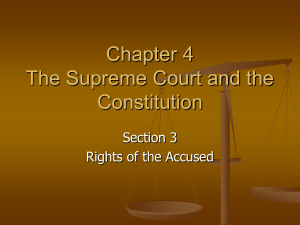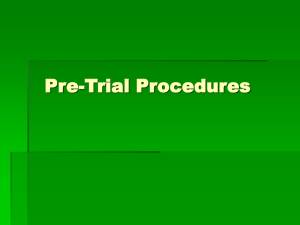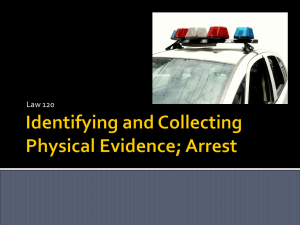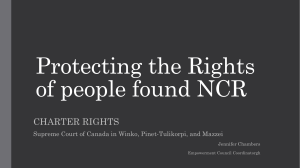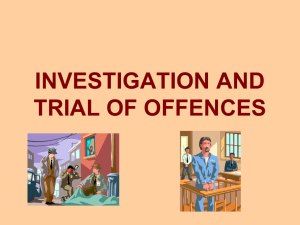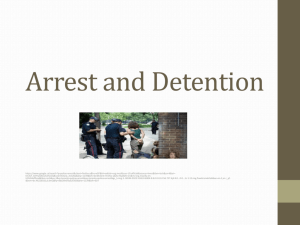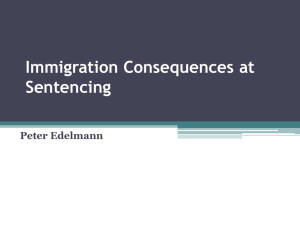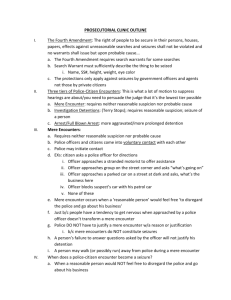BRINGING THE ACCUSED TO TRIAL: ARRESTS
advertisement
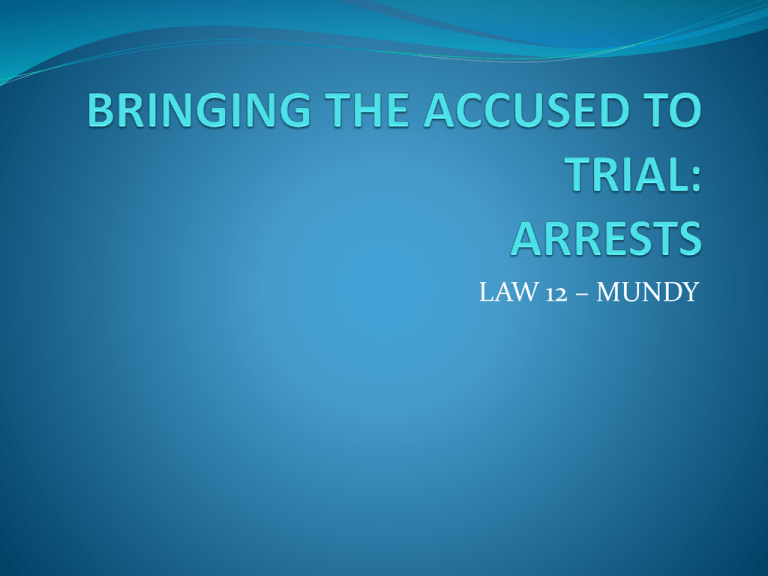
LAW 12 – MUNDY APPEARANCE NOTICES Used for: SUMMARY OFFENCES HYBRID (DUAL-PROCEDURE) OFFENCES LESS SERIOUS INDICTABLE OFFENCES Notice is a document given to accused indicating: Charge being laid Location and date of court hearing (accused is required to appear) Accused must sign appearance notice APPEARANCE NOTICES Notices differ from ARRESTS in that accused is not incarcerated leading to court hearing, nor subject to same procedure as an accused under arrest At court hearing, peace officer will swear an INFORMATION to the court stating the reasonable grounds that the accused committed the crime ARRESTS Used for: (SERIOUS) INDICTABLE OFFENCES During arrest, officer MUST: Identify himself (name and indication that she/he is an officer) Advise the accused that he/she is under arrest Inform the accused of the charge(s) Touch the accused to signify that she/he is now legally in police custody ARRESTS Purposes of arrest are to: Lay a charge Preserve evidence Prevent accused from committing any further crimes ARRESTS If accused RESISTS ARREST: Officers are allows to use as much force as necessary to prevent escape Officers may also use up to deadly force if: Suspect behaves in manner that indicates threat of serious harm or death Suspect flees in order to escape arrest No lesser means of subduing accused will be effective NOTE that officers are CRMINALLY LIABLE for the use of unnecessary force WARRANT FOR ARREST 3rd method of bringing accused to court: SUMMONS is a document that calls accused to appear in court for a charge, usually if suspect flees officers Summons are issued by judges upon receipt and review of an officer’s INFORMATION, then delivered to accused by sheriff or deputy WARRANT FOR ARREST WARRANT FOR ARREST is issued when determined by judge from an INFORMATION that a suspect will not appear in court voluntarily WARRANT indicates the accused (by name and description) and offence, and orders that the accused be arrested as soon as possible and brought before a judge Warrants are issued when judge determines from an information that there are reasonable grounds for arrest OFFICERS’ RIGHT OF ARREST Officers may only arrest (without need of warrant) one accused of committing an offence when: Suspect has been observed (by officers) committing either an indictable or summary offence Suspect has committed an indictable offence in the past or is attempting to commit an indictable offence Officers may arrest at any time (past offences, attempted offences) for any type of offence if a warrant is issued CITIZENS’ RIGHT OF ARREST Section 494 of Criminal Code of Canada allows a citizen to arrest a suspect when: Accused is observed in act of committing an indictable offence Suspect is being actively pursued by peace officer(s) for either summary or indictable offences Accused is committing a summary offence on citizen’s property (and is observed by citizen) This allows security guards the powers of arrest while protecting store property, for example

